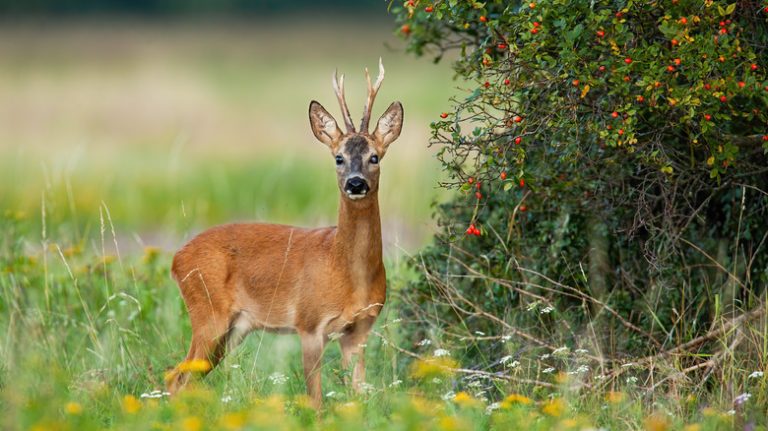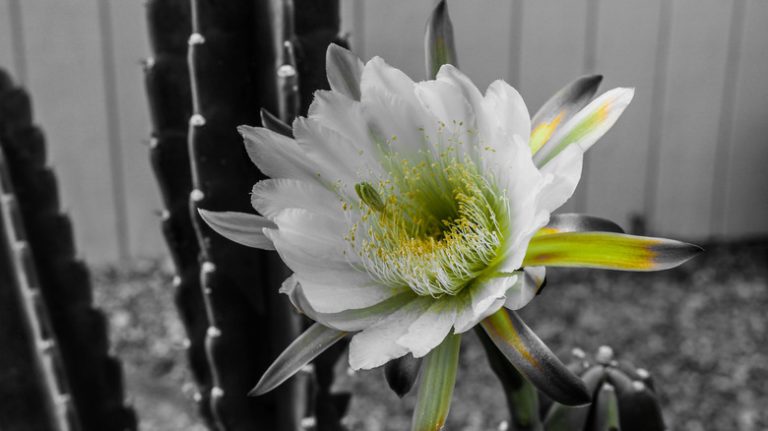Pests are a common problem in gardens and can cause a variety of issues for gardeners. Whether it’s an infestation of insects or a plague of rabbits, pests can quickly destroy all your hard work and leave you frustrated. Luckily, with a little effort and the right approach, you can effectively manage pests in your garden and protect your plants.
One of the first steps in managing pests is identifying and understanding the specific pests you are dealing with. Take the time to observe your plants and look for any signs of damage or infestation. Click here for a detailed description of common garden pests and how to identify them.
Once you have identified the pests, it’s important to take the appropriate measures to control and manage them. Depending on the type of pest, there are several methods you can use. For insects, you can try using organic insecticides or introducing beneficial insects that prey on them. For larger pests like deer, you may need to install fencing or use repellents to keep them away.
In addition to managing pests, it’s also important to create a garden environment that is less attractive to them. This can include planting a diverse range of species, both flowering and non-flowering, to attract a variety of beneficial insects. It’s also a good idea to group plants with similar needs together, as this can help prevent the spread of diseases and pests.
Another important aspect of pest management is practicing good garden hygiene. This includes regularly removing any dead or diseased plants, as well as cleaning up any fallen leaves or fruit. By doing this, you can help eliminate potential breeding sites for pests and reduce the risk of infestations.
In conclusion, managing pests in your garden requires a combination of knowledge, effort, and patience. By following the tips outlined above, you can take control of your garden and keep pests at bay. Remember, gardening is a constant learning process, so don’t hesitate to ask for help or seek advice from gardening experts.
Plant Spotlight on Spirea
Spirea is a group of shrubs that play a prominent role in the gardening world. With their beautiful clusters of white, pink, or orange flowers, spireas can add color and interest to any garden.
There are many different species of spirea to choose from, including spring-blooming and summer-blooming varieties. Depending on your specific needs and preferences, you can determine which type of spirea to plant.
One popular spirea species is the Spiraea x bumalda, also known as Anthony Waterer spirea. This variety has attractive dark pink flowers and a compact growth habit, making it a great choice for borders or window planting. It can be planted in full sun or partial shade and requires moderate watering.
Another popular variety is the Spiraea japonica, or Japanese spirea. This spirea has an upright habit and blooms throughout the summer with clusters of bright pink flowers. It is a low-maintenance plant that can tolerate poor soil conditions and is resistant to most pests and diseases.
Managing pests and weeds in your spirea garden may require some effort, but it is essential for the health and appearance of your plants. Regularly inspect your plants for any signs of pests, such as aphids or spider mites. If you notice any, you can use physical or organic methods to control them.
Pruning is also important for maintaining the shape and health of your spireas. You should prune them in late winter or early spring to remove any dead or damaged wood and to promote new growth. This will ensure that your spireas continue to bloom beautifully year after year.
In conclusion, spirea plants are a fantastic addition to any garden. With their sociable nature, they will happily share their beautiful flowers and foliage with other plants. So, if you want to add some color and interest to your garden, click here to learn more about spirea and how to manage them.
How to Manage Pests
When it comes to managing pests in your garden or landscape, there are some important steps you should follow. As the saying goes, an ounce of prevention is worth a pound of cure, and this holds true for pest management as well.
One common pest that many gardeners deal with is deer. These voracious eaters can wreak havoc on your plants and foliage. To manage deer, some people have had success planting spirea, a colorful flowering shrub. While deer may still browse the spirea, they are less likely to target it when more delicious options are available.
If you’re dealing with pests specific to certain plants or species, it’s important to do some research to find the best management techniques. For example, spireas, both spring-blooming and summer-blooming varieties, are generally hardy and low-maintenance. However, they may become susceptible to pests such as aphids or spider mites. In this case, using a horticultural oil spray can help rid the plants of these unwanted visitors.
In addition to pests, weeds can also be a nuisance in the garden. To manage weeds, it’s important to keep the garden well-maintained. This includes regular weeding and mulching to prevent weed growth. Applying a pre-emergent herbicide can also help control weeds before they have a chance to take hold.
Another important aspect of pest management is monitoring for signs of infestation. Regularly inspect your plants for any physical damage or unusual symptoms, such as discolored foliage or wilting. If you notice any signs of pests, take action as soon as possible to prevent the problem from spreading.
When it comes to pest management, prevention is always better than a cure. By implementing these strategies and staying proactive, you can keep pests at bay and protect your garden from unnecessary damage.
spirea
Spirea is a genus of flowering shrubs that belong to the Rosaceae family. There are several species and varieties of spirea, each with its own specific characteristics and habits.
Spireas are generally fine, deciduous shrubs that can vary in size depending on the specific variety. They have a spreading habit and usually grow in a rounded shape. Some spireas can reach a height of up to 5 feet tall, while others stay smaller, around 2-3 feet.
One of the most common varieties of spirea is the Bridal Veil spirea, which is known for its bright white flowers that bloom in spring. There are also spireas with pink flowers, such as the Anthony Waterer and the Goldflame spirea, which add a colorful touch to the garden.
Spireas are sociable plants that like to share their space with other shrubs and flowers. They can be a great addition to mixed borders or can be planted in groups to create a colorful focal point in the garden. Their blooms attract pollinators such as bees and butterflies.
Spireas are fairly easy to care for and can tolerate a wide range of growing conditions. They prefer full sun to partial shade and well-drained soil. Spireas are generally quite hardy and can withstand deer browsing. However, some species and varieties of spirea are more deer-resistant than others, so it is best to do some research before planting spireas in an area with a high deer population.
When it comes to pruning, spireas are very forgiving. They can be pruned in early spring or after blooming to maintain their shape and encourage more blooms. Removing any dead or damaged branches is also recommended to keep the shrub healthy.
In summary, spireas are versatile and colorful shrubs that can add beauty to any garden. Whether you choose a spring-blooming variety or a summer-blooming one, spireas are sure to brighten up your outdoor space. If you have any questions about managing pests or diseases for your spirea shrubs, click here to find more information.
Physical description
Spirea is a shrub that can be found in many gardens. There are different species and varieties of spireas, but they all have similar physical characteristics. These plants are known for their vibrant and colorful foliage that adds brightness to any garden.
One common variety of spirea is the Anthony Waterer variety. This variety has bright pink clusters of flowers that bloom throughout the summer. It can grow up to six feet tall and has a spreading habit. The foliage of the Anthony Waterer spirea is a deep green color and it has a compact growth habit.
Another common variety is the Bridal Veil spirea. This variety has delicate white flowers that form cascading clusters and bloom in early summer. The Bridal Veil spirea can grow up to eight feet tall and has an arching habit. Its foliage is a bright green color and it adds a touch of elegance to any garden.
Spireas are easy to manage and are a favorite among gardeners. They are deer-resistant and can tolerate a variety of growing conditions. Depending on the specific species and variety, spireas can be planted in full sun or partial shade. They prefer well-drained soil but can tolerate poor soil conditions as well. Spireas are also drought-tolerant once established and require minimal maintenance.
When it comes to managing pests, spireas are generally not prone to severe pest infestations. However, there are some common pests that may occasionally bother these plants. Aphids and spider mites are two pests that can be a nuisance to spireas. Regularly checking the plants for any signs of pest infestation will help catch and treat any issues early.
In conclusion, spireas are beautiful and easy-to-manage plants that add color and vibrancy to any garden. Whether you choose the Anthony Waterer variety or the Bridal Veil variety, you can be sure to have a stunning addition to your garden. With their stunning flowers and attractive foliage, spireas are a great choice for any garden.
Common species
When it comes to managing pests in your garden, it’s important to determine which species you’re dealing with. In this section, we’ll shine the spotlight on some common pests that gardeners may encounter.
One common pest that has been plaguing gardens for years is the spirea aphid. These pests feed on the foliage of spring-blooming shrubs, causing damage and stunting their growth. If you’re seeing curling leaves and distorted flowers on your spirea shrubs, chances are you have an aphid problem.
Another common pest that gardeners often have questions about is the whitefly. These small, winged insects can be found on the undersides of leaves and they feed on the sap of plants. They are particularly fond of colorful blooming plants, such as hibiscus and begonias.
One common misconception is that pests are only a problem in the warmer months. However, there are many pests that can survive through the winter and continue to cause damage in the spring and summer months. Some examples of such pests include scale insects, which often go unnoticed until they have caused significant damage to plants.
Managing pests in your garden can be a challenging task, but with the right knowledge and effort, it can be done. One common strategy is to plant shrubs and flowers that are known to attract beneficial insects, such as ladybugs and lacewings, which help control pest populations naturally.
It’s important to understand that different pests may have different habits and preferences. For example, aphids are more attracted to plants that have high nitrogen levels, while mites prefer dry, dusty conditions. By understanding the specific needs and habits of your garden pests, you can better manage and control them.
Often, the best way to manage pests is through a combination of physical and chemical methods. For example, removing infected foliage and pruning heavily infested areas can help reduce pest populations. Additionally, using insecticidal soaps or organic pesticides can be an effective way to control pests.
If you’re unsure about the pest species in your garden, there are several online resources that can help you identify them. Many websites have photo galleries and pest descriptions that can assist you in determining which pests you’re dealing with.
In conclusion, managing pests in your garden requires knowledge and vigilance. By familiarizing yourself with common pest species and their habits, you can better protect your plants and enjoy a pest-free garden.



